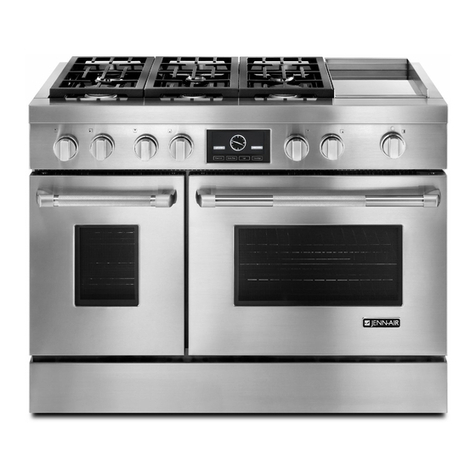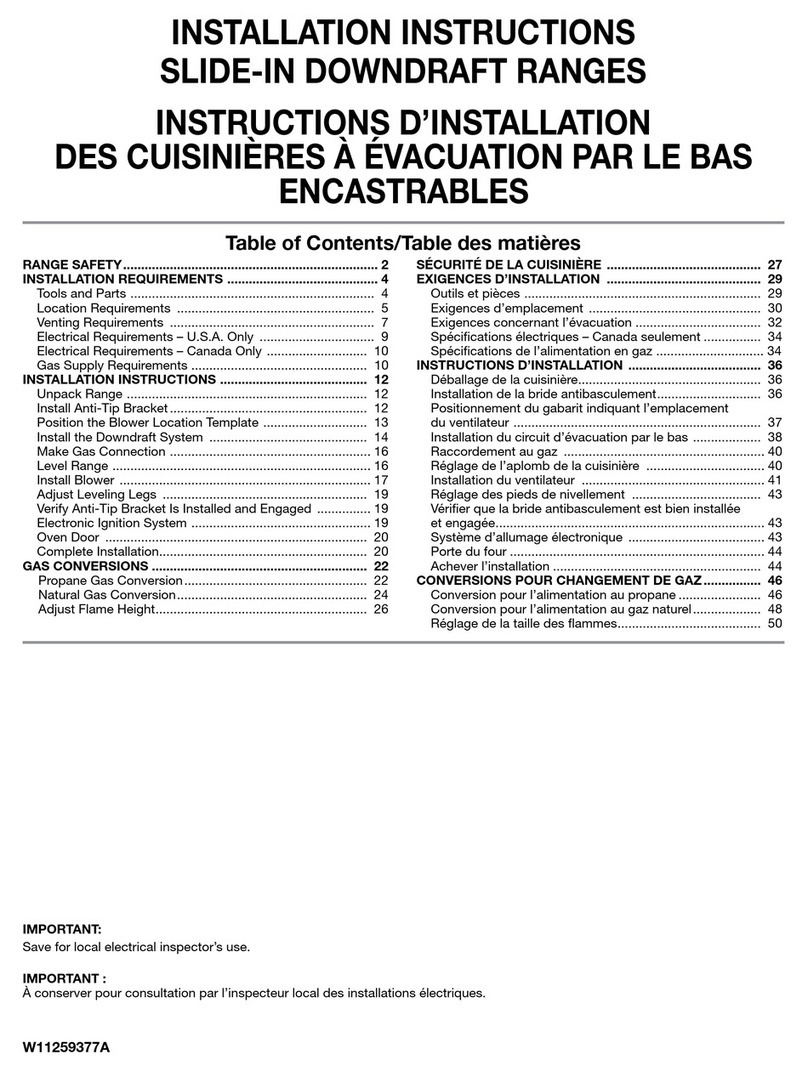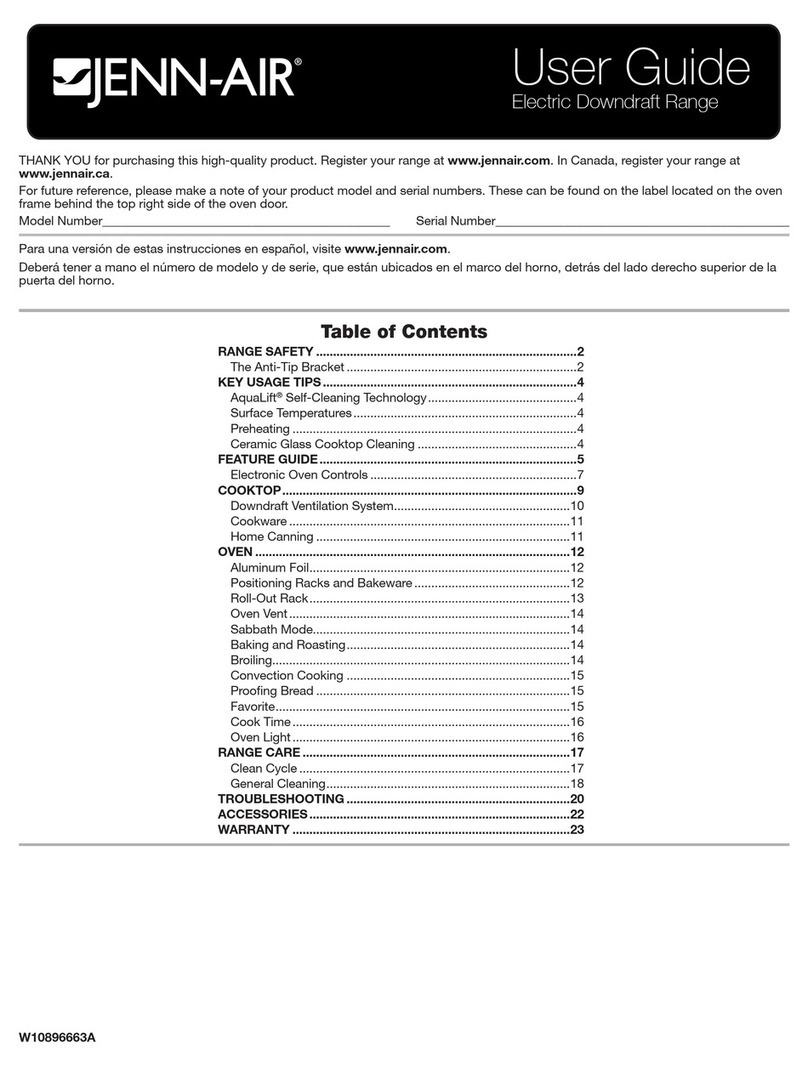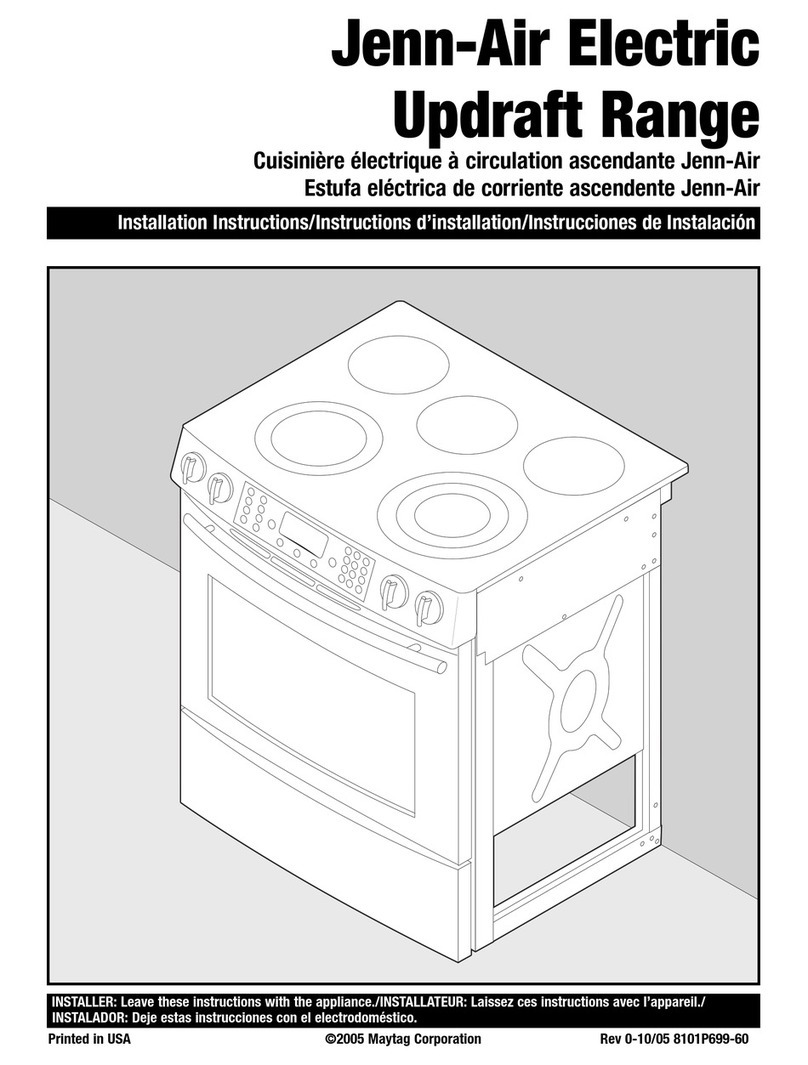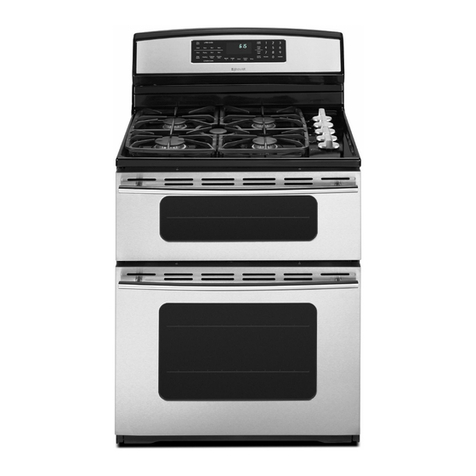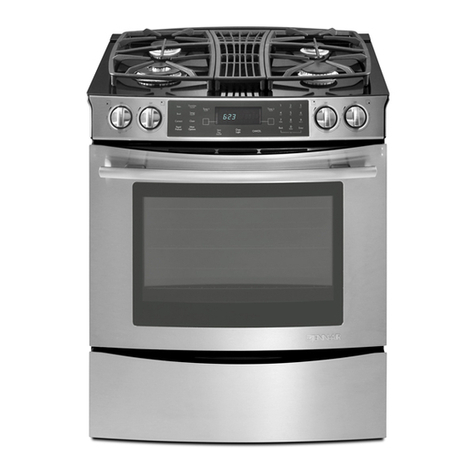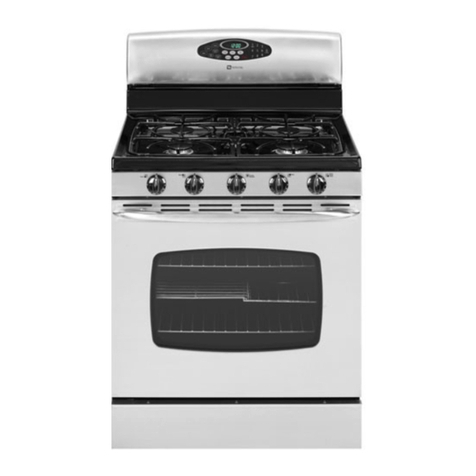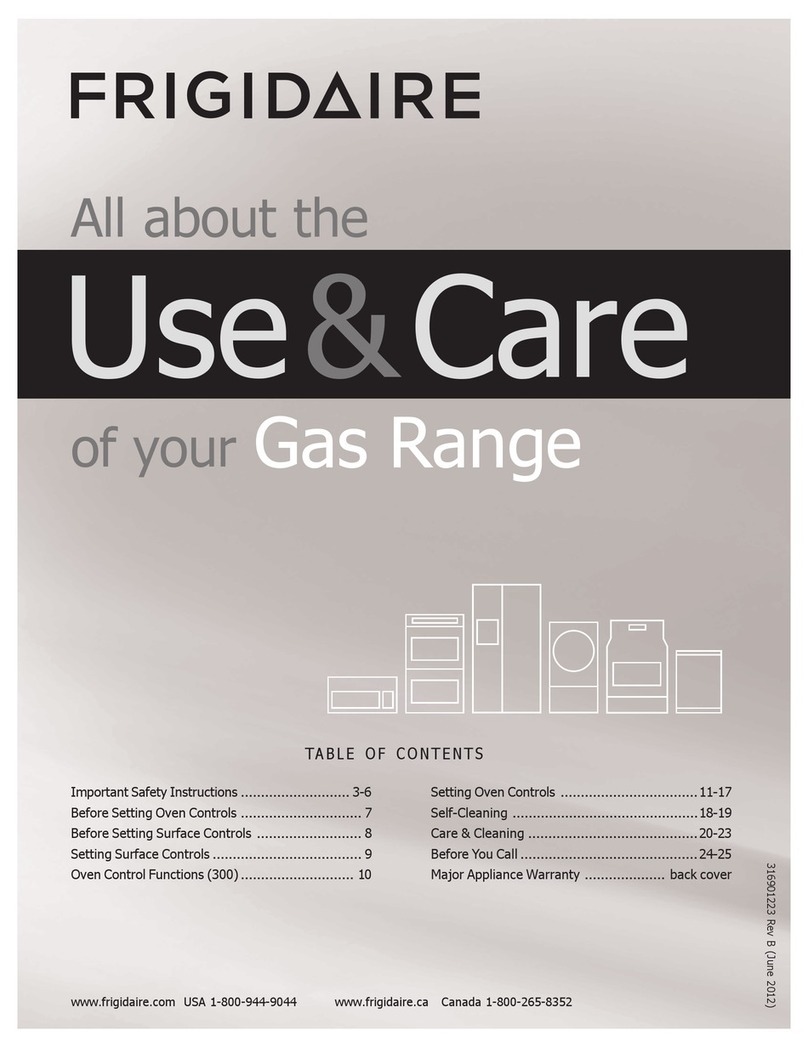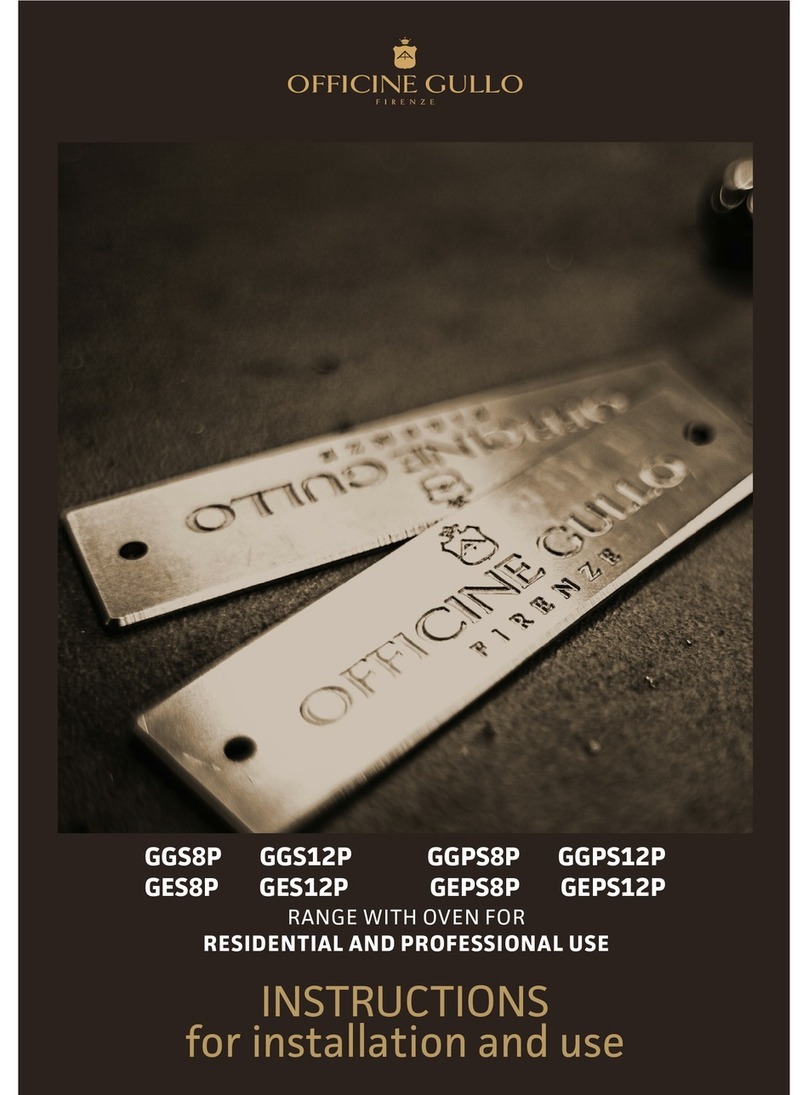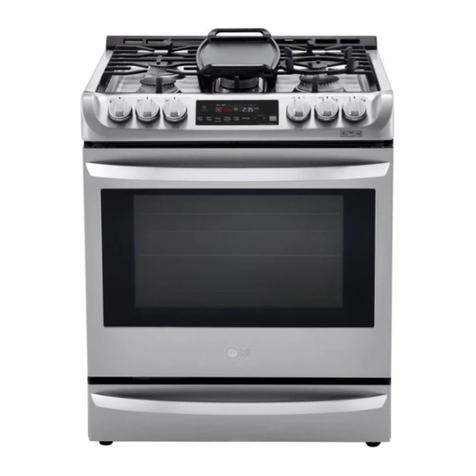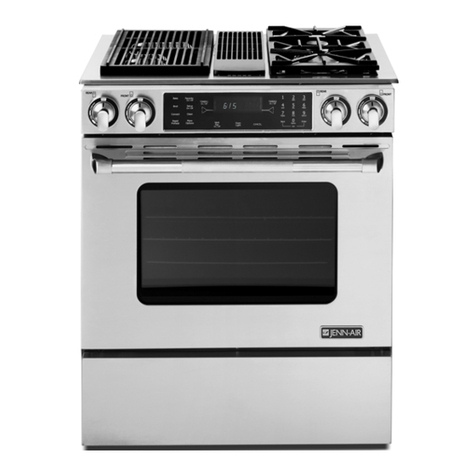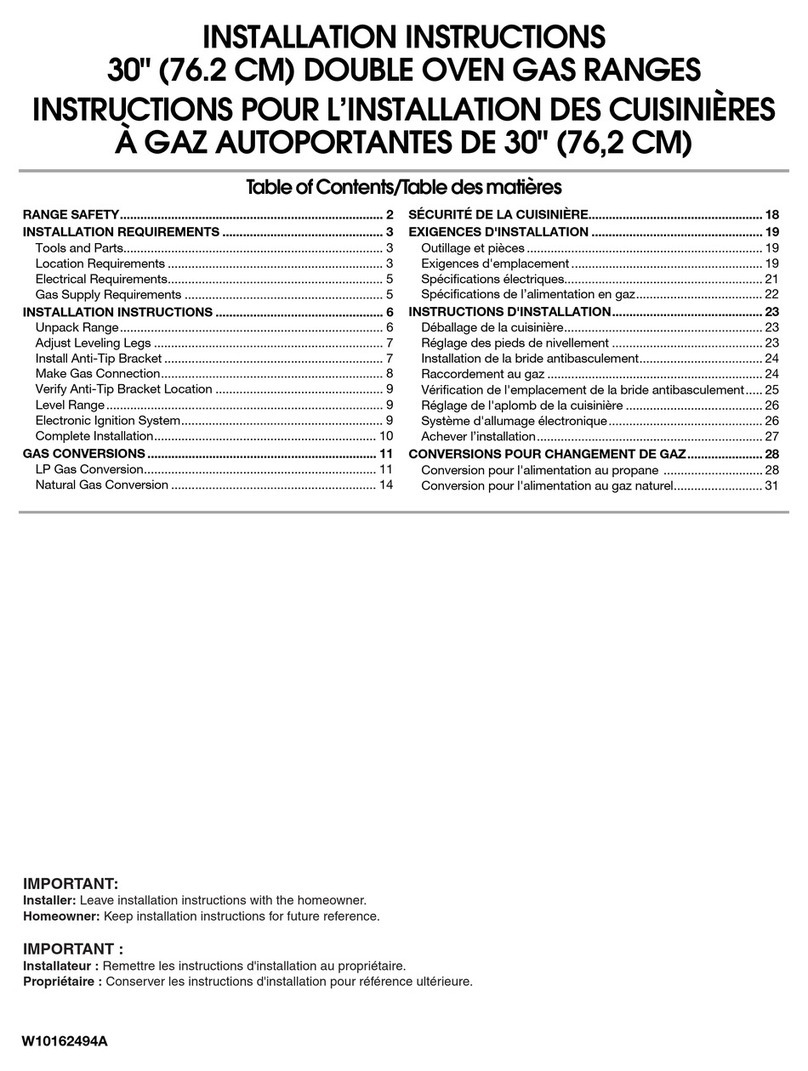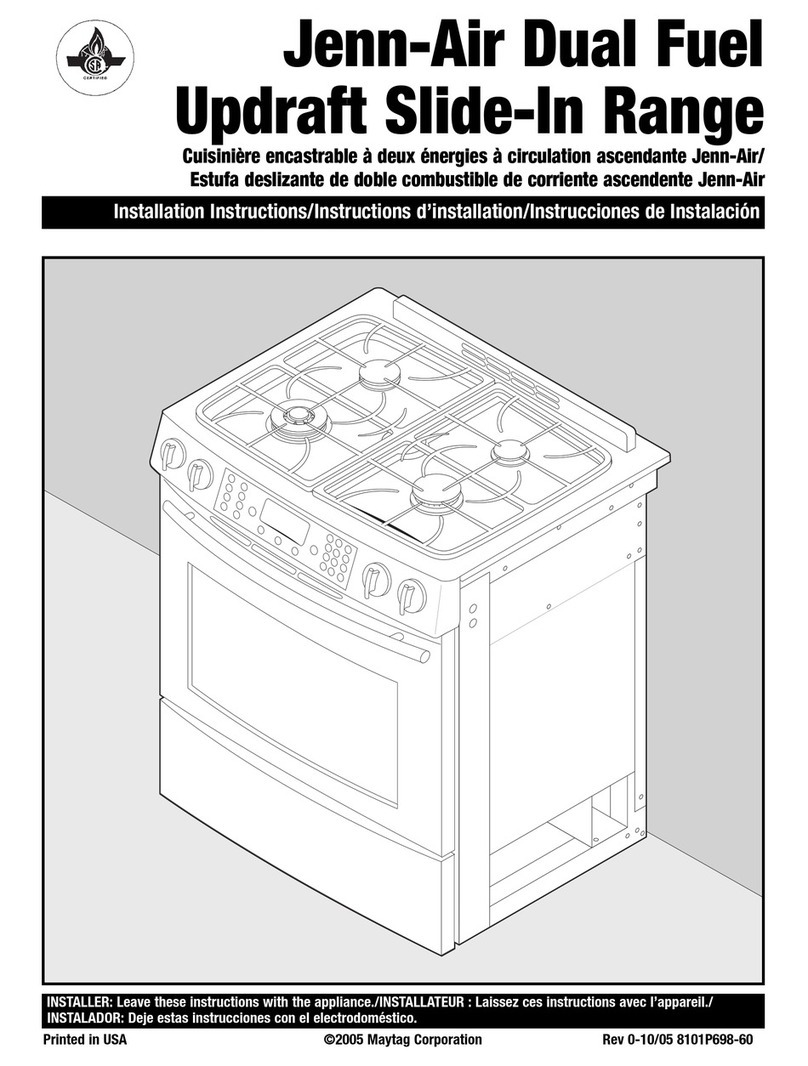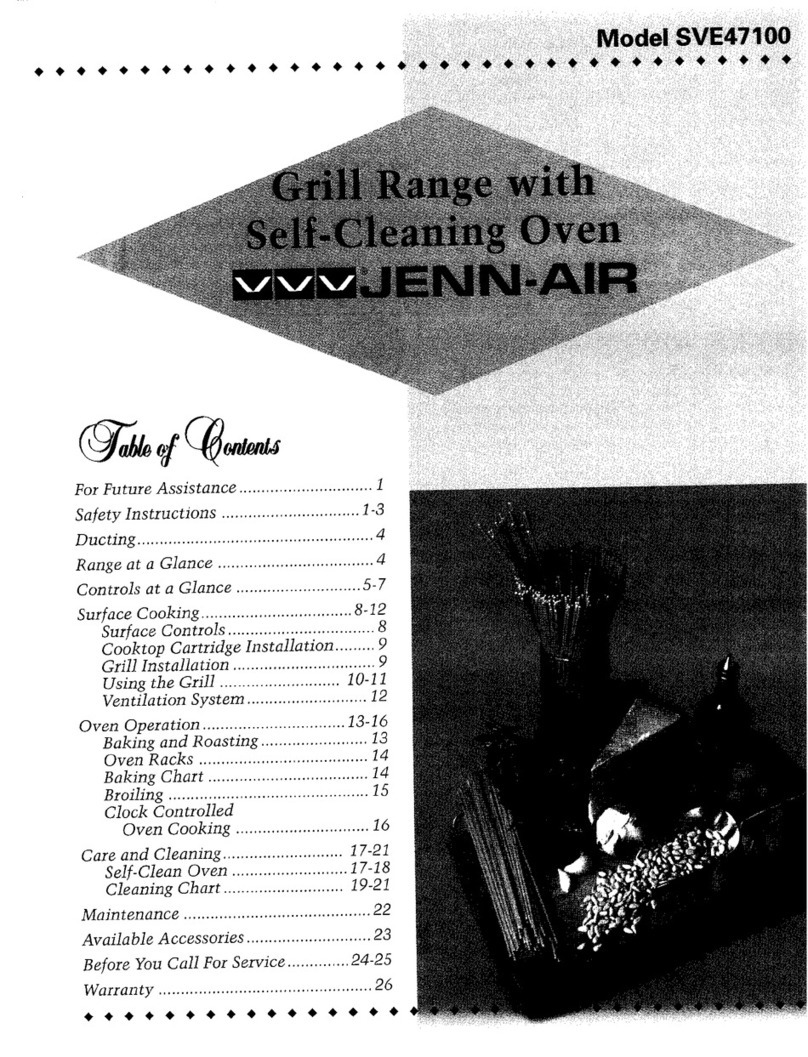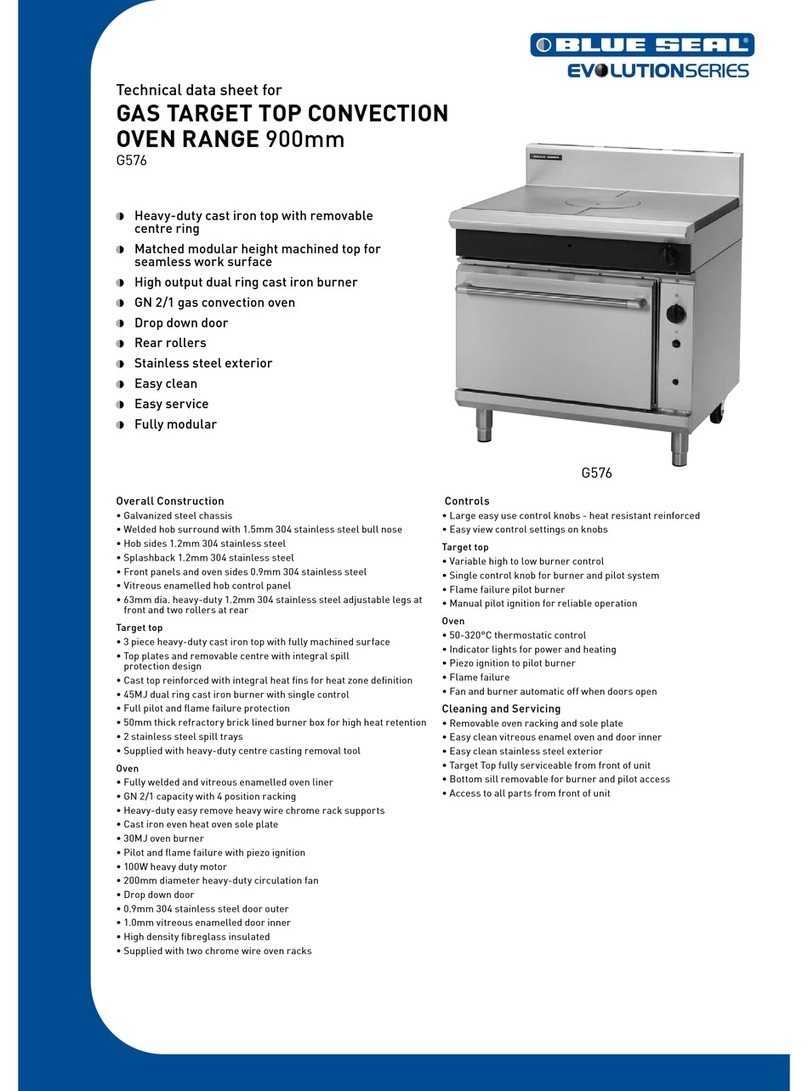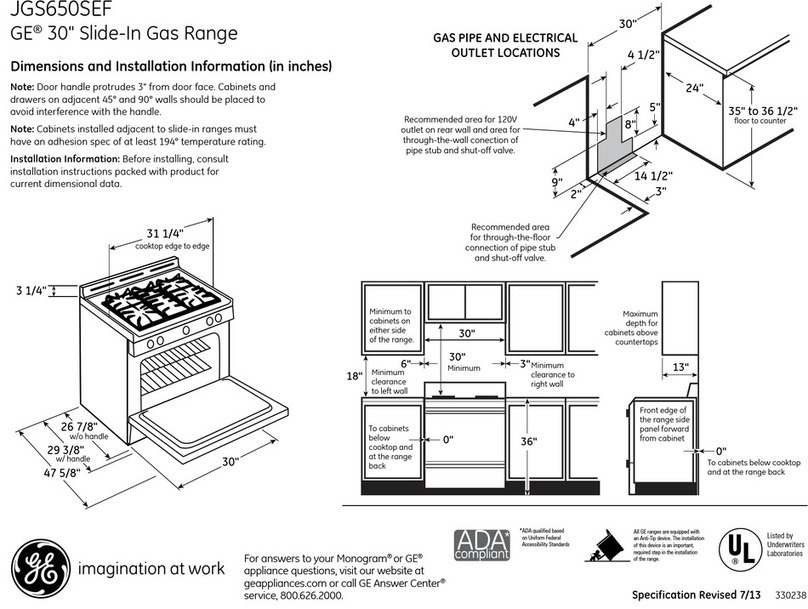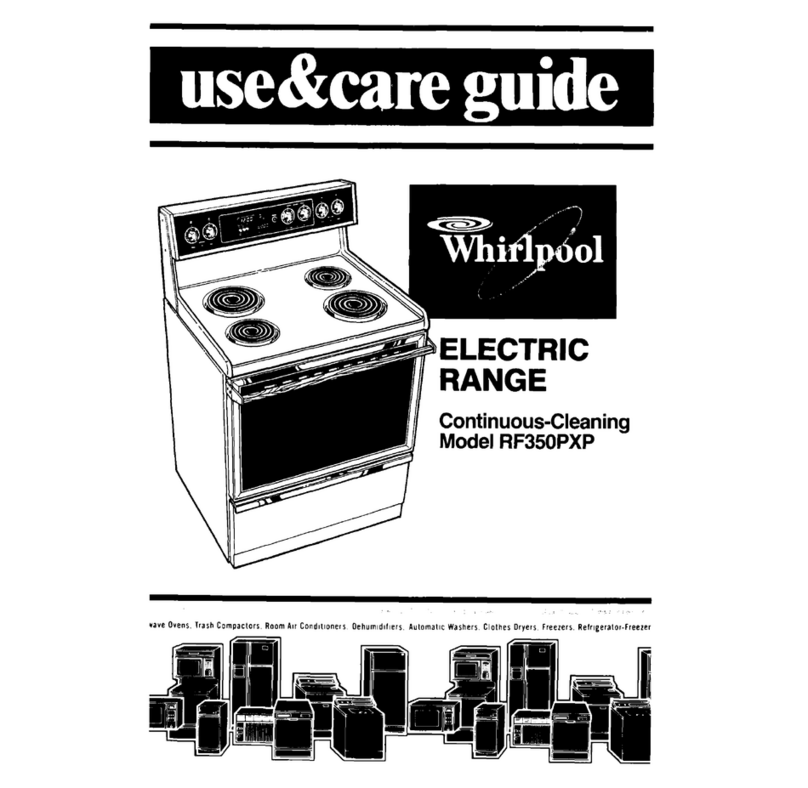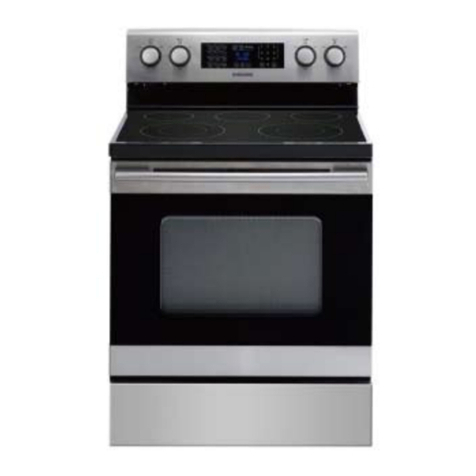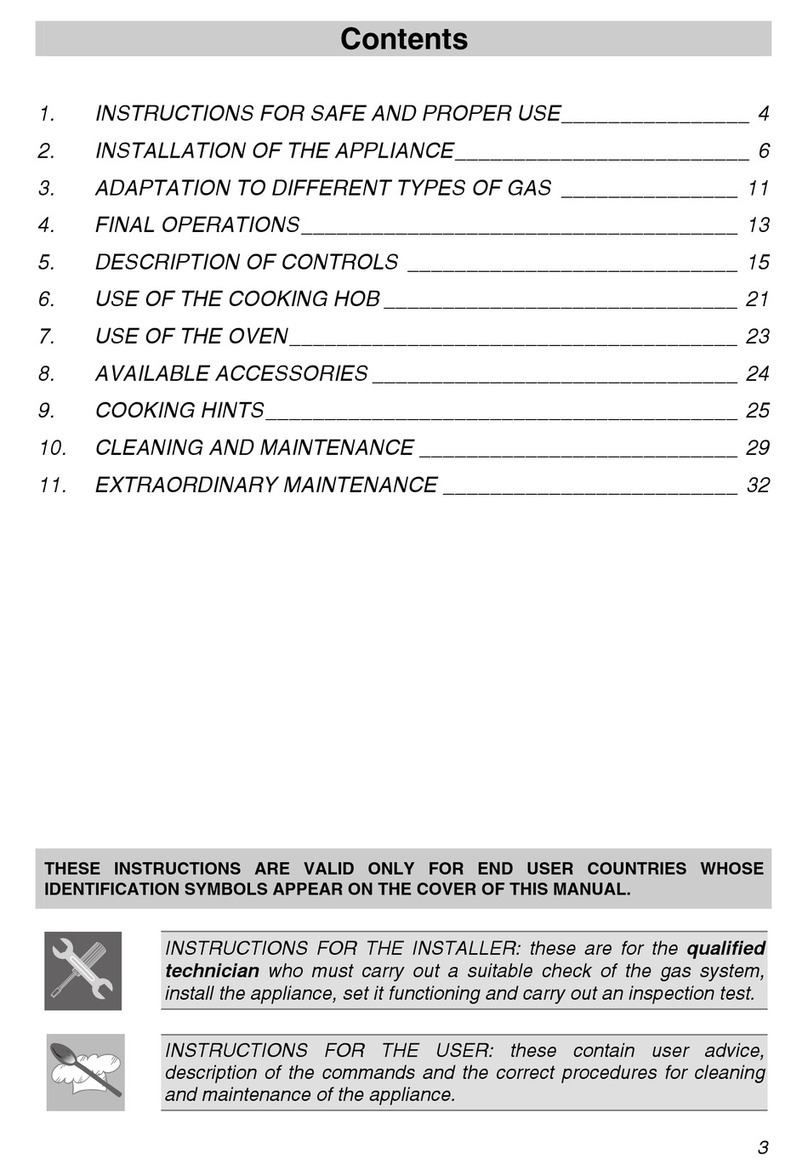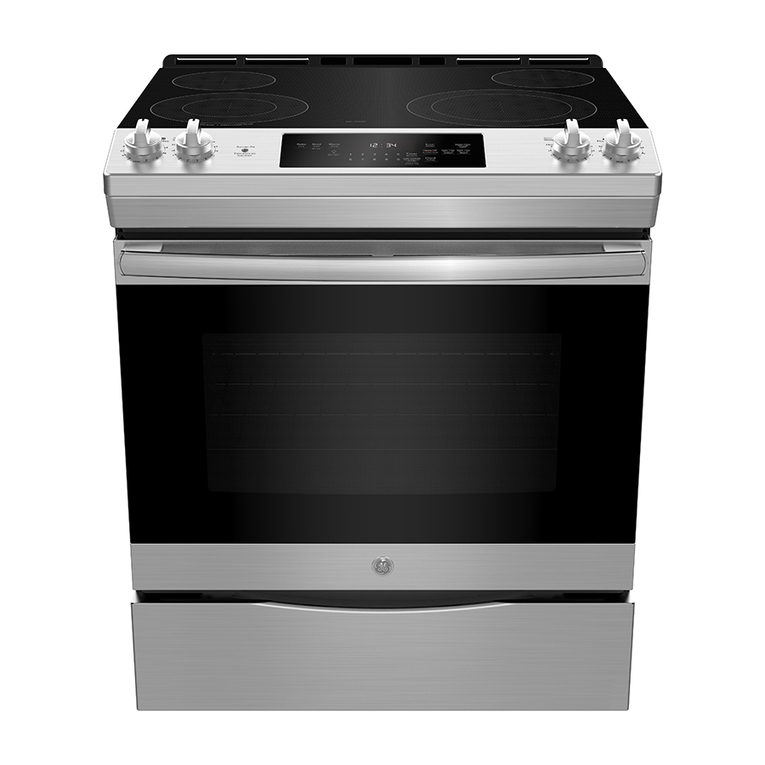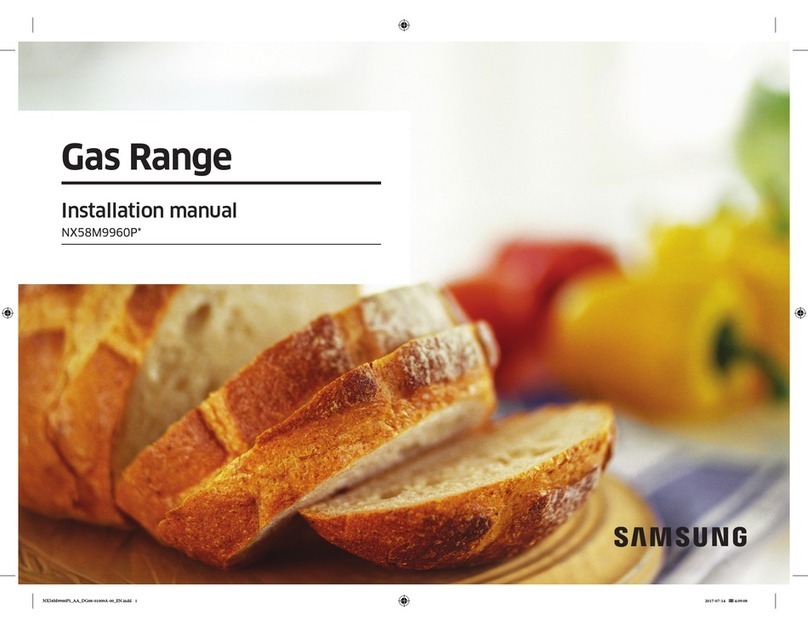
..... <:,
Avoid touching oven vent areawhie oven
ison and for several minutes after oven is
turned off. Some parts of the vent and
surrounding area become hot enough to
causeburns.After ovenisturned off,do not
touch the oven vent or surrounding areas
unqI they havehad sufficient time to cod.
Other potenqally hot surfaces include
cod<top, areas facing the cod<top, oven
vent, surfacesnear the vent opening,oven
door, areasaround theovendoor andoven
window.
WARNIMG: NEVER use
appliance door, or drawer, ff
equipped, as a step stool or seat as
this may resultin possible tipping of
the appliance, damage to the appfio
ante, and serious injuries.
Do not touch a hot oven rightbulb with
dampcloth asthe bulb could break.Should
the bulb break, disconnect power to the
appliance before removing bulb to avoid
electrical shod<.
(_OOXIN(; SAFFI IY
Always place a pan on a surface burner
before turning it on. Be sure you know
which knob controls which surfaceburner.
Hake surethe correct burner isturned on
and that the burner has ignited. When
cooking is completed, turn burner off be-
fore removing panto prevent exposure to
burner flame.
Alwaysadjust surfaceburner flameso that
it doesnot extend beyondthebottom edge
ofthe pan.An excessiveflameishazardous,
wastes energy and may damagethe appli-
ance,panor cabinets abovethe appliance.
NEVER reaveasurfacecooking operation
unattended especially when using a high
heat setting or when deep fat frying.
Boi[overs cause smoking and greasy
spi[[oversmayignite. Cleanup greasyspills
assoonaspossible.Do not usehighheatfor
extended cooking operations.
NEVER heat an unopened container on
the surfaceburner or in the oven.Pressure
build-up may causecontainer to burst re-
suiting in seriouspersona[injury or damage
to the appliance.
Use dry, sturdy pothoiders. Damp pot-
holders may cause burns from steam.
Dishtowels or other substitutes should
never be usedaspothdders becausethey
can trail across hot surface burners and
ignite or get caughton applianceparts.
Always let quantities of hot fat used for
deep fat frying coo[ before attempting to
move or handle.
Do not let cooking greaseor other flare-
mane materialsaccumulate in or near the
appliance, hood or vent fan. Clean hood
frequently to prevent greasefrom accumu-
latingon hood or filter. When flamingfoods
under the hood turn the fan on.
NEVER wear garments made of flam-
mable material or loose fitting or long-
sleeved @pare[ while cooking. Clothing
may ignite or catch utensil handles.
Always place oven racks in the desired
positions while oveniscool SHe oven rack
out to add or remove food, using dry,
sturdy pothoiders. Always avoid reaching
into the oven to add or remove food. if a
rack must be moved while hot, use a dry
pothoider. Always turn the oven off at the
end of cooking.
Use carewhen openingthe oven door. Let
hot air or steam escapebefore moving or
replacing food.
Always remove soiled broiler panfrom the
broiler compartment aftercooking.Grease
left in the pan may become hot enough
to ignite.
PREPARED FOOD WARNING: Fol-
low food manufacturer's instructions, if a
plastic frozen food container and/or its
cover distorts, warps, or isotherwise dam-
aged during cooking, immediately discard
the food and its container. The food could
be contaminated.
NEVER use aluminum foil to cover oven
racks or oven bottom. This could result in
risk of electric shock, fire, or damageto the
appliance. Use foil only as directed in this
guide.
Do not use aluminum foil to line burner
spi[[overbow[. Restriction of normalair flow
may result in unsafeoperation.
UT:gNS L SAF:g'Ft'
Use panswith fiat bottoms and handlesthat
are easilygraspedand staycod. Avoid using
unstable, warped, easily tipped or loose-
handled pans. Also avoid usingpans, espe-
cially small pans,with heavy handlesasthey
could be unstableandeasilytip. Pansthat are
heavyto movewhenfilled with food mayalso
be hazardous.
Be sure utensil is large enough to properly
contain food andavoid boiiovers. Pansize is
particularly important in deep fat frying. Be
sure pan wii[ accommodate the volume of
food that isto beaddedaswei[ asthe bubble
action of fat.
To minimize burns, ignition of flammable
materials and spillagedue to unintentional
contactwith theutensil do notextendhandles
over adjacent surfaceburners. Alwaysturn
pan handlestoward the side or back of the
appliance,not out into the room where they
are easily hit or reached by sinai[ children.
Never let apanboil dry asthis could damage
the utensil andthe appliance.
Follow the manufacturer's directions when
usingoven cooking bags.
Only certain types of glass,glass/ceramic,
ceramic or glazed utensils are suitable for
cooktop or oven usagewithout breakingdue
to the suddenchangeintemperature. Follow
manufacturer'sinstructions when usingglass.
This appliancehasbeen tested for safeper-
formance usingconventional cod<ware. Do
not useany devicesor accessoriesthat are
not specificallyrecommended in this guide.
Do not use eyelid covers for the surface
units,stovetop grills, or add-onovenconvec-
